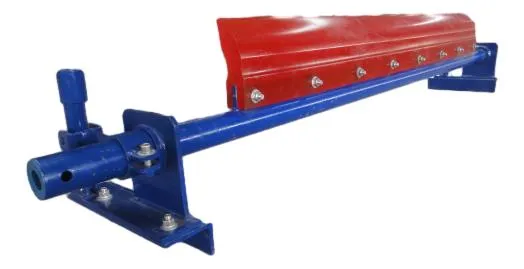 Afrikaans
Afrikaans  Albanian
Albanian  Amharic
Amharic  Arabic
Arabic  Armenian
Armenian  Azerbaijani
Azerbaijani  Basque
Basque  Belarusian
Belarusian  Bengali
Bengali  Bosnian
Bosnian  Bulgarian
Bulgarian  Catalan
Catalan  Cebuano
Cebuano  Corsican
Corsican  Croatian
Croatian  Czech
Czech  Danish
Danish  Dutch
Dutch  English
English  Esperanto
Esperanto  Estonian
Estonian  Finnish
Finnish  French
French  Frisian
Frisian  Galician
Galician  Georgian
Georgian  German
German  Greek
Greek  Gujarati
Gujarati  Haitian Creole
Haitian Creole  hausa
hausa  hawaiian
hawaiian  Hebrew
Hebrew  Hindi
Hindi  Miao
Miao  Hungarian
Hungarian  Icelandic
Icelandic  igbo
igbo  Indonesian
Indonesian  irish
irish  Italian
Italian  Japanese
Japanese  Javanese
Javanese  Kannada
Kannada  kazakh
kazakh  Khmer
Khmer  Rwandese
Rwandese  Korean
Korean  Kurdish
Kurdish  Kyrgyz
Kyrgyz  Lao
Lao  Latin
Latin  Latvian
Latvian  Lithuanian
Lithuanian  Luxembourgish
Luxembourgish  Macedonian
Macedonian  Malgashi
Malgashi  Malay
Malay  Malayalam
Malayalam  Maltese
Maltese  Maori
Maori  Marathi
Marathi  Mongolian
Mongolian  Myanmar
Myanmar  Nepali
Nepali  Norwegian
Norwegian  Norwegian
Norwegian  Occitan
Occitan  Pashto
Pashto  Persian
Persian  Polish
Polish  Portuguese
Portuguese  Punjabi
Punjabi  Romanian
Romanian  Russian
Russian  Samoan
Samoan  Scottish Gaelic
Scottish Gaelic  Serbian
Serbian  Sesotho
Sesotho  Shona
Shona  Sindhi
Sindhi  Sinhala
Sinhala  Slovak
Slovak  Slovenian
Slovenian  Somali
Somali  Spanish
Spanish  Sundanese
Sundanese  Swahili
Swahili  Swedish
Swedish  Tagalog
Tagalog  Tajik
Tajik  Tamil
Tamil  Tatar
Tatar  Telugu
Telugu  Thai
Thai  Turkish
Turkish  Turkmen
Turkmen  Ukrainian
Ukrainian  Urdu
Urdu  Uighur
Uighur  Uzbek
Uzbek  Vietnamese
Vietnamese  Welsh
Welsh  Bantu
Bantu  Yiddish
Yiddish  Yoruba
Yoruba  Zulu
Zulu conveyor brackets
Understanding Conveyor Brackets Essential Components for Efficient Material Handling
Conveyor systems have become essential in various industries, providing efficient and reliable means to transport materials from one point to another. Among the critical components that ensure the smooth operation of these systems are conveyor brackets. Though often overlooked, these brackets play a vital role in supporting and securing conveyor belts, rollers, and other integral parts of the system. In this article, we will explore the importance, types, and considerations related to conveyor brackets.
Importance of Conveyor Brackets
Conveyor brackets serve as the backbone of conveyor systems, providing stability and structure. They hold the conveyor belt and its components in place, ensuring that materials are transported smoothly without any disruption. Properly installed brackets can minimize wear and tear on the conveyor system, prolonging its lifespan and reducing maintenance costs. Additionally, these brackets contribute to the overall safety of the system by preventing misalignment, which can lead to accidents or product damage.
Types of Conveyor Brackets
There are various types of conveyor brackets designed for specific applications and configurations
. Some of the most common types include1. Support Brackets These brackets provide essential support to the conveyor belt, ensuring it maintains the correct alignment and tension. They can be adjustable, allowing for easy modifications as the system may require.
2. Corner Brackets Used primarily in systems with directional changes, corner brackets help maintain the integrity of the conveyor system at bends. They ensure that the belt continues to run smoothly without slipping or misaligning.
3. Mounting Brackets These brackets are designed to attach various components, such as motors and rollers, to the conveyor framework. They play a crucial role in ensuring that all parts are securely fastened, allowing for efficient operation.
conveyor brackets

4. Guide Brackets These are specialized brackets that help direct the material being transported, ensuring that it stays on track and doesn't fall off the conveyor. They are especially useful in high-speed applications where precision is critical.
Considerations When Choosing Conveyor Brackets
When selecting conveyor brackets, several factors must be taken into account to ensure optimal functionality
1. Material The material of the bracket is vital for durability and performance. Common materials include stainless steel, aluminum, and various polymers, each offering different benefits in terms of strength, weight, and corrosion resistance.
2. Compatibility It’s essential to choose brackets that are compatible with the specific conveyor system in use. This includes considering the size, weight capacity, and design of the brackets in relation to the conveyor belt and its components.
3. Load Capacity The load capacity of the brackets must align with the weight and type of materials being conveyed. Overloaded brackets can lead to premature wear or failure, resulting in costly downtimes.
4. Ease of Installation Consideration should also be given to the installation process. Brackets that require complicated or time-consuming installation may increase downtime during system setup or maintenance.
Conclusion
Conveyor brackets, though often taken for granted, are critical components that significantly influence the efficiency and safety of conveyor systems. Understanding their various types and considering essential factors during selection can lead to improved performance and reduced maintenance costs. As industries continue to evolve and demand for automation increases, the importance of these unsung heroes in material handling will only continue to grow. Investing in high-quality conveyor brackets is, therefore, a crucial step toward achieving optimal system efficiency and reliability.
-
Wing Pulley Conveyor for Conveyor Belt MaintenanceNewsJun.16,2025
-
Self Cleaning Spiral Idler for Conveyor DesignNewsJun.16,2025
-
Pulley Lagging for Conveyor Belt AlignmentNewsJun.16,2025
-
Impact Idlers Used in Belt Conveyor for PerformanceNewsJun.16,2025
-
Ceramic Lagging Conveyor Pulley for Conveyor Belt SystemsNewsJun.16,2025
-
Belt Conveyor Idler for Heavy-Duty ApplicationsNewsJun.16,2025





























